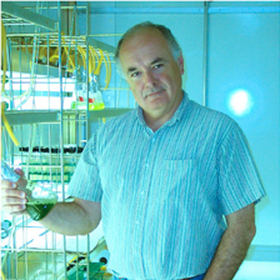

1445 Gortner Avenue
St. Paul, MN 55108
United States
Pete
Lefebvre
Research in my laboratory seeks to understand the assembly and function of the eukaryotic flagellum.
Research in my laboratory seeks to understand the assembly and function of the eukaryotic flagellum. We use as our model system for these studies the unicellular green alga, Chlamydomonas reinhardtii, the most commonly used genetic system for the study of flagella. The goal of the laboratory is to isolate mutants with defective flagellar assembly and function, then to clone and characterize the affected genes, in order to eventually define all of the protein components of the flagella and their interactions. Some of the investigators in the laboratory are studying mutants with defective flagellar assembly, such as mutants with no flagella, the wrong number of flagella, or flagella which have lost control of flagellar length. A particularly interesting class of mutants cannot control the extent of flagellar assembly, and grow flagella of up to four times normal length. Such mutants are defective either in the mechanism which senses flagellar length, or in the mechanism which enforces correct length. Other investigators are studying mutants with paralyzed flagella, especially mutants with defects in the central pair of microtubules in the flagellar axoneme. Given the conservation in flagellar protein composition and structure in all eukaryotic cells, from Chlamydomonas to mammals, it is not surprising that we have already found human homologues for the novel Chlamydomonas genes identified in our early experiments.
Piasecki, B. P., LaVoie, M., Tam, L. W., Lefebvre, P. A. , Silflow, C. D. 2008. The Uni2 phosphoprotein is a cell cycle regulated component of the basal body maturation pathway in Chlamydomonas reinhardtii. Mol Biol Cell. 19(1):262-73.
Tam, L. W. , Wilson, N. F., Lefebvre, P. A. 2007. A CDK-related kinase regulates the length and assembly of flagella in Chlamydomonas. J Cell Biol. 176(6):819-29.
Nguyen, R.L., Tam, L.W., and Lefebvre, P.A. 2005. The LF1Gene of Chlamydomonas reinhardtii Encodes a Novel Protein Required for Flagellar Length Control. Genetics, 169:1415-1424.
Berman, S. A, Wilson, N. F., Haas, N. A., Lefebvre, P.A. 2003. A novel MAP kinase regulates flagellar length in Chlamydomonas. Curr Biol. Jul 1;13(13):1145-9.
Lefebvre, P.A. and Silflow, C.D. 1999. Chlamydomonas: The Cell and It's Genomes. Genetics 151:9-14
Smith, E. F. and P. A. Lefebvre. 1996. PF16 encodes a protein with armadillo repeats and localizes to a single microtubule of the central apparatus in Chlamydomonas flagella. J. Cell Biol. 132: 359-370.